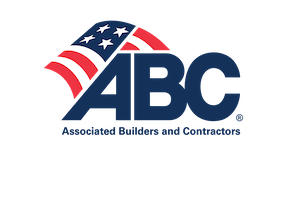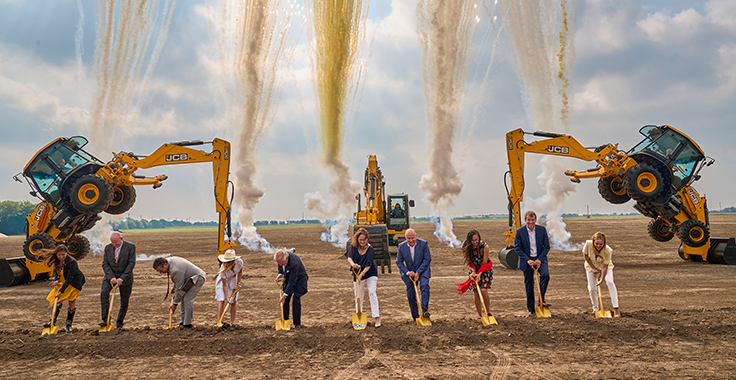The Pit & Quarry University Handbook is an educational resource that offers comprehensive lessons covering the entire aggregate production process from start to finish, highlighting new technologies and enhanced procedures within each branch/category of the aggregates industry.
FULL HANDBOOK
Chapter 1: Industry Overview
Chapter 2: Geology & Site Selection
Chapter 3: Drilling & Blasting
Chapter 4: Excavating & Loading
Chapter 5: Hauling
Chapter 6: Crushing & Hydraulic Breaking
Chapter 7: Screening
Chapter 8: Washing & Classifying
Chapter 9: Conveying & Material Handling
Chapter 10: Loadout & Weighing
Chapter 11: Safety & Health
While crushing and screening are fundamental to aggregate processing, washing and classifying are becoming increasingly important steps for producers.
Striving to improve concrete and bituminous mixes and road bases for end use, clean aggregates are often a must. Construction aggregates are ultimately washed so they meet specifications.
Still, producers often struggle to meet every cleanliness requirement. While hydraulic methods are generally the most effective for cleaning aggregates, they are not flawless. It is often necessary to allow a limited percentage of deleterious matter.

Of course, there is more to the function of water in processing aggregates than mere washing. Among these functions are:
- Clay and silt removal
- Removing shale, coal, soft stone, roots, twigs and trash
- Sizing
- Classifying and separating
- Dewatering
Because no washing method is flawless and because some materials may require too much time, equipment and water to meet specifications, it is not always economically practical to use such materials.
Therefore, it is important to test the material source thoroughly beforehand to ensure the desired finished product can be produced at a reasonable cost. A materials engineer can be of assistance in assessing the economic suitability of material and typically must approve a source before production begins.
Additionally, many manufacturers of washing equipment examine and test samples to determine whether their equipment can do the job satisfactorily. No reputable manufacturer will recommend equipment if there is reasonable doubt about satisfactory performance on the job.
The ideal gradation is seldom, if ever, met in naturally occurring deposits. Yet, the quality and control of these gradations are essential to the workability and durability of the end use. Gradation, however, can be adjusted or improved with simple processes. This is a primary goal of aggregate-preparation plants.
Crushing, screening and blending help adjust aggregate gradations, though the material may still require washing to meet cleanliness specifications.
Washing and classifying are typically divided into two categories, based on material size:
- Coarse material. Generally above 3/8 in. (and sometimes split at 1/4 in. or #4 mesh). In the washing process it is usually desired to remove foreign, objectionable material – including fine particles.
- Fine aggregates. 3/8 in. and smaller. In this case, it is generally necessary to remove dirt and silt while retaining sand down to 100 mesh – or even 200 mesh.
As pits and quarries progress into their reserves, easily mined material becomes less available, forcing producers – particularly sand and gravel operations – to process material with a greater amount of clay and silt. While some materials may require only rinsing to remove fines, other materials may require scrubbing to remove clay or other deleterious materials.
Sand and gravel are typically mined in a moist or wet condition by open-pit excavation or dredging. Open-pit excavation is commonly performed with power shovels, front-end loaders, bucket-wheel excavators or draglines. Alternatively, dredging involves mounting equipment on boats or barges and removing the sand and gravel from the bottom of a water body by suction or bucket-type dredges.
After mining, the materials are transported to the processing plant by suction pump, earthmovers, trucks or automated belt conveyor systems.
Although significant amounts of sand and gravel are used for fill, bedding and base products without processing, most domestic sand and gravel is processed prior to use.
Processing sand and gravel for various market applications often involves different combinations of equipment, such as log washers; coarse and fine material washers; attrition scrubbers; bucket wheels; classifying tanks; hydrocyclones; and dewatering screens.

Log Washers
Log washers are used in aggregate processing to remove tough, plastic-type clays from natural and crushed gravel, stone or ore feeds.
When in operation, log washers are installed at slopes ranging from 0 to 14 degrees, depending on the severity of the washing application. As the percentage of deleterious material increases, the slope must be raised to increase retention time. In some cases, lower slopes may increase capacity while decreasing horsepower and wear.
One limitation of log washers is that they must have a controlled top size. Typically, 36–in.- and 38–in.-diameter units can accept feed material up to 4 in., while a 46–in.-diameter unit can accept feed material as large as 6-in. cubed. It is recommended that sand-sized fractions be removed prior to a log washer, as finer material tends to cushion the washing action.
When selecting a log washer, the amount, type and percentage of deleterious material to be removed must be considered. As the percentage of deleterious material increases, longer units should be used to increase the washing action. In some severe applications, two or more log washers in a series may be required.
For safety, operators should use optional guards to prevent accidents. In some cases, guards can be retrofitted if dangerous access points are present.
Also with log washers, paddles and flights should periodically be inspected for wear and possible replacement. With metallic paddles or shoes, worn ends can become sharp enough to cause serious injury, if not handled properly. Maintenance personnel should take appropriate precautions.
FULL HANDBOOK
Chapter 1: Industry Overview
Chapter 2: Geology & Site Selection
Chapter 3: Drilling & Blasting
Chapter 4: Excavating & Loading
Chapter 5: Hauling
Chapter 6: Crushing & Hydraulic Breaking
Chapter 7: Screening
Chapter 8: Washing & Classifying
Chapter 9: Conveying & Material Handling
Chapter 10: Loadout & Weighing
Chapter 11: Safety & Health
Use the page numbers to continue reading, or select a section / chapter above.


&uuid=(email))
&uuid=(email))










